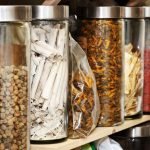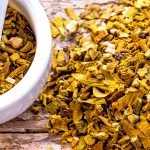Voices of Naturopathic Research: Interviews with NCNM, Bastyr, SCNM, & NUHS Research Faculty
Mark Swanson, ND
What are 5 interesting things about the naturopathic academic research departments? I wanted to find out, so I invited the Research Faculty Chairs from National College of Naturopathic Medicine (NCNM), Bastyr University, National University of Health Sciences (NUHS), and Southwest College of Naturopathic Medicine (SCNM) to participate in this Expert Report. Each graciously accepted.
This interview was going to be a bit different than previous Expert Reports. It was only a single question, and intended to elicit quick and easy responses. I simply asked each, “What are 5 interesting things about the Naturopathic Research Department that NDs may like to know? This would give each guest an opportunity for a timely update and some refreshed awareness, I thought. Since each of the 4 research departments would have a chance to weigh in on the same question, the challenge was to keep it brief and on-track. It worked out well, and what they did have to say was really great commentary. Each guest will be introduced at his or her segment of the interview. Here are their responses:
Five interesting things about the NCNM Research Department…
Heather Zwickey, PhD; Chair, Research Department; National College of Naturopathic Medicine, Portland, OR:
NCNM is the research school! Most NDs don’t know that we have a Masters program and that we have 52 students conducting research, 44 of whom are ND candidates. They don’t know that we’re National Institutes of Health (NIH)-funded and that we are thriving! We have a larger research faculty and more research projects than any other ND school! Here are my 5:
- NCNM offers formal research training through a Masters of Science in Integrative Medicine Research. This unique program encourages students to develop their own research ideas, and then pairs them with a faculty mentor to facilitate the research. The research program is thriving, with 44 ND students simultaneously completing a research degree and 24 faculty mentors. Overlap with the Masters in Nutrition and Masters in Global Health provides students with a broad educational experience and exciting electives.
- In order to provide support and build the evidence-base for the ND and Chinese Medicine clinical programs, researchers at NCNM study whole practice, constitutional types, nutrition, mind-body, herbs, supplements, and energy medicine. Students and faculty conduct basic, applied, clinical, and health services research.
- NCNM researchers maintain a wide array of collaborations, with local, national, international relationships. These are:
- Local: Oregon Health & Science University, Legacy Good Samaritan, Kaiser, Oregon College of Oriental Medicine
- National: University of Washington, University of Michigan, UCSF, Yale, Johns Hopkins
- International: Canadian College of Naturopathic Medicine, Dalhousie University, Korean Institute of Oriental Medicine, and others.
- At NCNM, we have multiple sources of research revenue, including NIH-funded grants, foundations grants, individual donors, and industry-funded research. In addition, the college funds research infrastructure.
- One research project that illustrates how NCNM conducts its research is our current “Ketogenic Diet for Parkinson’s” study. In this project, researchers are studying the effects of the ketogenic diet (where 70% of calories are derived from fat) on tremor, balance, and quality of life for people with Parkinson’s disease. Rather than focus on a single nutrient, the whole dietary intervention is studied. Research and nutrition students act as nutritional consultants for study participants, helping them with recipes and menu planning.
Five interesting things about the Bastyr Research Department…
Jane Guiltinan, ND; Dean, School of Naturopathic Medicine; Bastyr University, Seattle, WA:
Thank you for this opportunity. We have a lot going on in the Research Institute!
- The Bastyr University Research Institute (BURI) is currently engaged in conducting several research trials funded by the NIH related to oncology. One is a mechanism study, where the investigators are researching the actions of Trametes versicolor, a medicinal mushroom, on its immunologic and anti-tumor effects, and hope to determine whether there is a potential use for this mushroom in the treatment of cancer patients in the United States. This study is being done in collaboration with the University of Washington.
- Another oncology-related study being done is in collaboration with the Fred Hutchinson Cancer Research Center in Seattle. Dr Leanna Standish is the principal investigator of this multi-center study, which aims to collect prospective outcomes-data on matched controls. The study participants are women with breast cancer who are being treated with both conventional oncology care and integrative oncology care. This group will be compared to a similar group of women who are only receiving conventional care. Quality of life, recurrence rates, and survival rates are the outcomes being studied and compared.
- Dr Laurie Mischley is the PI (principal investigator) of a Phase I trial of Intranasal Glutathione in Parkinson’s Disease (PD). This double-blind, placebo-controlled, dose-escalation study is designed to evaluate the safety, tolerability, and absorption of intranasal glutathione in patients with PD. Many CAM providers use glutathione in PD, believing it may slow down the progression of the disease, but there is very little rigorous data on this therapeutic intervention.
- BURI hosts a Center for Student Research at Bastyr University. This center assists students who are interested in conducting research in finding mentors and resources to pursue their study. Students who do conduct research are then provided the opportunity to present their findings at Bastyr’s annual Student Research Conference. The following are some examples of recent student-research projects:
- Anti-inflammatory Effects of Curcumin and Turmeric in a Psoriatic Cell Model
- Effect of Fat Consumption and Antioxidant Supplementation on Serum Antioxidant Capacity
- Literature Review Comparative Analysis of Mindfulness-Based Treatment Versus Opiates on Individuals with Chronic Pain
- Comparison of Analyzed Iron Content With Iron Values Reported on Nutrition Labels of Commercial Dark Chocolate Bars
- Effects of Artemisin on Prostate Cancer Epithelial and Stromal Cell Co-Cultures
- Lastly, I was appointed to the National Advisory Council for Complementary and Alternative Medicine (NACCAM) by former Secretary of Health and Human Services, Kathleen Sebelius, in 2012. This advisory council meets 3 times yearly at the NIH in Bethesda, Maryland, and advises Dr Josephine Briggs, Director of the National Center of Complementary and Alternative Medicine (NCCAM), on grant-finding awards and other issues. It is a very interesting role and I am honored to be serving our profession in this manner.
Five interesting things about the NUHS Research Department…
Gregory Cramer, DC, PhD; Professor and Dean of Research; National University of Health Sciences, Lombard IL:
A unique feature of the NUHS Research Department is that the purpose of the department is not to conduct all the scholarship/research at the institution, but to encourage, facilitate, and support scholarship at NUHS. To this end, the scholarly projects recently completed and currently underway were conducted by NUHS ND faculty. We are proud of this.
- The NUHS ND program is relatively young and is currently at the stage where research questions – generated by ND faculty and administrators during the creation and implementation of the program – are being developed into plans for individual projects or a series of projects. Consequently, much of the current work is related to thoroughly investigating the literature on topics of interest that also show promise for future research.
- The NIH/NCCAM R25 grant allowed for the development of a strong curriculum in evidence-based practice (EBP) for students in NUHS professional programs, including all students in the Doctor of Naturopathic Medicine program. The grant program consisted of 6 one-day research-related workshops and approximately 80 one-hour webinars, lectures, and sessions (OWLS) on various aspects of research and EBP.
- NUHS Doctor of Naturopathic medicine faculty are involved in a wide variety of scholarly projects, including projects related to: a) using art to teach empathy; b) ethics and communications in an integrative medicine curriculum; c) cardiac biomarkers in treatment of atherosclerosis-related illness; d) geriatrics; e) the AMPK pathway as a target for natural therapies in the treatment of dysglycemia and inflammation, nerviness, and hormesis.
- The NUHS research department is able to support the development of pilot studies in areas of ND faculty interest. Several of the projects listed above are being further developed into pilot studies.
- An independent student research elective is available to pair interested ND students with faculty to pursue areas of mutual interest. Students are also able to work as research assistants. For example, one ND student is assisting a faculty member on a project entitled “Assessing spinal degeneration using diagnostic ultrasound.”
Five interesting things about the SCNM Research Department…
Jeffrey O. Langland, PhD; Chair, Research Department; Southwest College of Naturopathic Medicine, Tempe, AZ:
The field of naturopathic medicine is ”hungry” for the inclusion and development of cutting-edge research technologies, to build upon a legacy of historical medical use. Listed below are a few of my own personal insights related to current and future research endeavors in this field:
- The future of naturopathic medicine needs to be evidence-based. Although a strong foundation of historical use of naturopathic modalities is beneficial, physicians and patients should desire and insist on understanding and truly evaluating the efficacy and mode-of-action of treatments. It is frustrating to me the “wall” that exists between traditional allopathic medicine and naturopathic medicine. The 2 sides can truly complement one another if we are willing to move past our often-adversarial positions. Evidence-based research brings us 1 step closer to this goal. Time and time again, our research has proven the efficacy of medicinal botanicals, adding to our knowledge and confidence of their value, as well as building on the acceptance of naturopathic medicine across all disciplines.
- I am occasionally told that basic “bench-top” laboratory research does not have a place in naturopathic medicine, but these are the techniques that allow us to grow. As an example, our research has developed methods to identify the antiviral activity and mechanism-of-action of botanical tinctures. Based on this, we have created botanical blends with truly synergistic activity which we can prove will target a virus at various points in the replication cycle, thereby not only improving naturopathic medicine, but being more effective than any other treatments available. This understanding could not be done without modern molecular biology methods.
- We all need to be more open-minded. I was once told by a student that anti-bacterial botanicals were better than traditional antibiotics because bacteria cannot develop resistance to therapeutic botanicals. When asked how he knew this, there was a pause with no answer. It was a concept based on the philosophy that something “natural” must be better than a pure drug. We subsequently investigated this concept and found that bacteria would actually always develop resistance, even to therapeutic botanicals – bacteria will adapt to survive. I was then told that such results would damage the value of naturopathic medicine. My reply was just the opposite: such research supports the use of botanicals in the treatment of bacterial infections, and these results teach physicians that proper use and procedures must be maintained in order to not make the same mistakes as done with antibiotics.
- Rediscovery of ancient medicine is truly euphoric. One of our initial research projects in naturopathic medicine involved the characterization of a botanical which was only described in a small clinical article from the year 1862. We took this obscure report and attempted to validate the findings. Although we were hopeful, we were also realistic with concerns regarding methods of preparation, sources of materials, and so forth. To our amazement and excitement, we were able to validate the claims from this article and prove the efficacy of this botanical. Today, this research has not only supported the efficacy, but has demonstrated the mechanism-of-action of this botanical against the bioterror agent of smallpox.
- Research in the field of naturopathic medicine has been the most rewarding pursuit of my own personal career. Through our research program we have been able to discover, improve, and validate existing and new botanical therapeutics. These results have had tremendous positive impacts on the health and well-being of many individuals. The major obstacle has been limitations on funding. Although government support for naturopathic medicine is occasionally available through agencies such as the National Council for Complementary and Alternative Medicine (NCCAM), many of the requests for funding proposals are very specific and not related to our work. For us, many responses from agencies examining our research have been met with heartache, with the most common complaint from these reviewers being that we’re working with botanical tinctures (either a mixture of herbs or a single total herb tincture) rather than isolated compounds. This has been, and I am sure will continue to be, the largest hurdle to overcome regarding the future of research in naturopathic medicine.
I hope this provides some insight into the highly untouched and rewarding nature of naturopathic research. Many new treatments and cures remain to be discovered, and the door to the future is wide open.
Dr Swanson’s Closing Comments
Naturopathic research is also taking place in other academic settings. I am personally involved in one such study. I am co-investigator on an Institutional Review Board (IRB)-approved clinical research trial being conducted with the Mylan School of Pharmacy at Duquesne University in Pittsburgh, PA. My co-investigator is Paula-Witt Enderby, PhD, Professor of Pharmacology. Our research team is conducting a 1-year, double-blind, randomized, placebo-controlled trial on the effects of a “chrono-synergy” nutraceutical combination of strontium (citrate), melatonin, vitamin D3, and K2 (MK7) in women with osteopenia. The Melatonin-Micronutrient for Osteopenia Treatment Study (MOTs) will be completed in early 2015 (http://clinicaltrials.gov/ct2/show/NCT01870115).
Here you have it… 5 Interesting Things About The Naturopathic Research Department that NDs May Like To Know, from 4 naturopathic medical schools. It’s clear that naturopathic research is alive and well and is establishing its contributions in the evolution of medicine. For the likes of NCNM and Bastyr, the research departments reflect a larger, more mature and advanced program with lots of collaborations and student involvement, which simultaneously spans numerous research projects and ongoing clinical trials. Meanwhile, at NUHS, the research program is much newer, less comprehensive, and is progressing through the preparatory steps to achieve the future goal of implementing a fully-functioning base for research studies, including clinical trials. From SCNM, Dr Langland gave a more insightful and philosophical response, which brought together important aspects of rediscovery, awareness, and challenges surrounding naturopathic research, which impacts within the profession.
This interview, though only a single question, gave a good pulse and spectrum of the modern naturopathic quest for validation and discovery through evidence-based research that serves to continually shape and define the standards of naturopathic medical care. To the many students and NDs who pursue and dedicate themselves to a research career, you are to be admired, respected, and commended. Many will be eventually honored for their work. My multiple thanks go out to the naturopathic academic professionals that participated in this research-focused segment of The Expert Report. They were great responses!
 Mark Swanson, ND, writes “The Expert Report” column, which is featured in NDNR. Dr Swanson is Chief Medical Officer at Pure Encapsulations, Inc, and for more than 20 years has been the company’s senior medical advisor. He is a former associate editor for the American Journal of Naturopathic Medicine, national product director, and consultant to the nutritional supplement industry. He is a pioneer graduate of Bastyr University, 1984. Dr Swanson maintains his private practice, specializing in functional-naturopathic medicine in Sequim, Washington.
Mark Swanson, ND, writes “The Expert Report” column, which is featured in NDNR. Dr Swanson is Chief Medical Officer at Pure Encapsulations, Inc, and for more than 20 years has been the company’s senior medical advisor. He is a former associate editor for the American Journal of Naturopathic Medicine, national product director, and consultant to the nutritional supplement industry. He is a pioneer graduate of Bastyr University, 1984. Dr Swanson maintains his private practice, specializing in functional-naturopathic medicine in Sequim, Washington.









